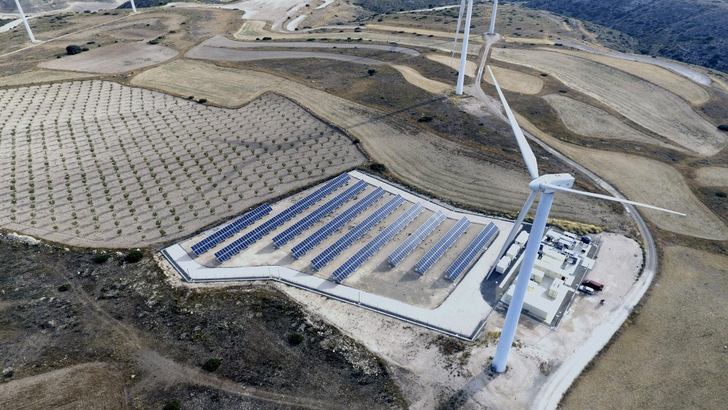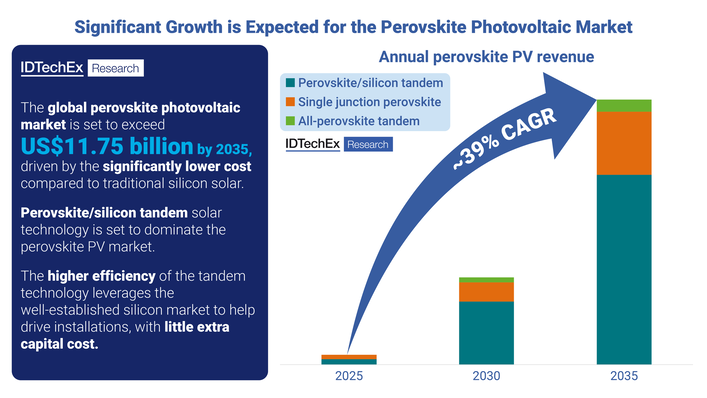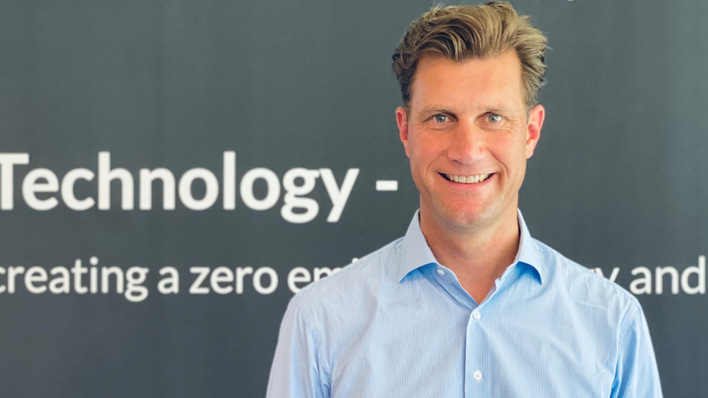The Russian war of aggression on Ukraine made it obvious how vulnerable the European economy and society are due to high, one-sided import dependency on fossil fuels from a few countries. But also in the case of key technologies for the climate turnaround, it is a matter of not making Germany and Europe too dependent on imports from individual countries, especially China. This is because there is a risk of political blackmail and negative economic effects as a result. Recently, with the introduction of the Inflation Reduction Act (IRA) in the USA, it became evident that global competition for the location of the most important future technologies for the transformation is in full swing. And China has been systematically working for years to become the world leader in green technologies.
"The exciting question is where we currently stand and how we will position ourselves here in the future," emphasizes Regine Günther, Director of the Berlin Climate Neutrality Foundation. The study "Securing Germany's Sovereignty - Resilient Supply Chains for the Transformation to Climate Neutrality", which was recently presented in Berlin, aims to provide more clarity in this regard. It was prepared by scientists from Prognos, the Öko-Institut and the Wuppertal Institute.
Also interesting: Intersolar and Solarpower Europe to host conference on PV sustainability
In the study, they take a close look at central key technologies of the transformation along the entire supply chain to find out for which raw materials, components or strategic goods critical dependencies already exist today or are likely to arise in the foreseeable future. They develop strategies and tools to make supply chains more robust and provide initial policy recommendations.
Key technologies, vulnerabilities and critical raw materials
The first step is to identify the most important key technologies for the climate turnaround, the political sovereignty of Germany and Europe, and the safeguarding of the industrial location. According to the study, these are photovoltaics, wind power, lithium-ion batteries for electromobility, permanent magnets for e-mobility and wind power, electrolysers, heat pumps and green steel production plants (DRI shaft furnaces).
In a second step, vulnerabilities are analyzed along the entire supply chains of these seven key technologies, which include raw material extraction as well as raw material processing, subcomponents and components.
Then, the most critical raw materials for these key technologies are quantified in terms of their future availability. These are lithium, iridium (heavy and light), rare earths, cobalt, nickel, graphite and manganese.
The example of photovoltaics
The results of the study drastically demonstrate dependencies and vulnerabilities. According to the study, the availability of the most important raw material, quartz sand, is not a problem for the booming photovoltaics industry in Europe. The critical areas are processing and components. In 2022, for example, there was just 21 GW of manufacturing capacity for polysilicon processing in Europe, and China's share of global production was 79%. 97% of wafers and ingots are "made in China", 2 GW are manufactured in Europe. Likewise, only 2 GW of solar cells come from European production; China's share of global production here is 97%. Things don't look much better for solar glass, only 3 GW were produced in Europe in 2022. The volume of European module production was just 10 GW, Chinese modules accounted for 75% of the global market.
High import dependency for permanent magnets
Europe's import dependence is also high for permanent magnets for electric motors and wind generators. The high-performance magnets are compact, have a high power density and higher efficiency. They are used in 95% of all new e-vehicles, all electric trucks, 95% of new offshore wind and 25% of onshore wind turbines, according to the study. They are made up of about one-third light rare earths (neodymium, praseodymium) and heavy rare earths (dysprosium, terbium). China also dominates the supply chain, accounting for 58% of rare earth mining and 87% (light) to 100% (heavy) of rare earth processing. 94% of all permanent magnets are manufactured in China. In addition, supply shortages are expected in the coming years, especially for dysprosium, due to the strong growth in demand.
China's market dominance also in lithium-ion batteries
China also has high market power in lithium-ion batteries for e-mobility. For example, in the mining of graphite (73%) and graphite processing (100%), the processing of lithium (73%), nickel (75%) and cobalt (75%), the cathode material (71%), the anode material (91%) as (sub)components, and the battery cells (77%). The study sees the biggest bottleneck in future availability in lithium, where Australia currently dominates production with a global market share of 52%. Global demand for lithium is expected to increase fivefold by 2030.
PEM electrolysers - critical iridium supply
Supply chains for proton exchange membrane (PEM) electrolysers for green hydrogen production are also fragile. PEM electrolysers are particularly suitable for renewable energy power systems and are considered a mature technology. The supply of iridium is particularly critical here. It occurs only very rarely in the earth's crust (1 :2.5 billion) and is the third most expensive metal. Annual global production as a companion to platinum is only 8 t, 85% of which is in South Africa.
Green steel: only two DRI technology suppliers
The supply chains for the production of climate-neutral steel by direct reduction plants (DRI) using green hydrogen and iron ore are also critical. Here, the bottleneck is primarily in the area of plant engineering. Global demand is expected to increase tenfold in the coming years, but there are currently only two technology suppliers, Midrex (USA, parent company Kobe Steel Japan) and Tenova (Italy, parent company Techint Argentina).
More offensive European industrial policy called for
As measures for more robust supply chains, the study authors recommend, among other things, promoting investments to build up production in Europe and for stable domestic sales markets. To this end, they say, compensatory measures are needed for the European transformation industries to create a level playing field with subsidized competitors outside Europe. In addition to investment subsidies, operating cost subsidies should also be made possible for a limited period.
Did you miss that? Record low PV prices endanger European manufacturing
In addition, the promotion of critical raw materials within the EU should be promoted. In order to diversify the supply chains geographically, "transformation partnerships at eye level" are needed, with a strengthening of value creation in the partner countries and through intensified cooperation in education and research projects. Early capacity building in the recycling industry is also crucial, he said, even if potential for some technologies is not expected until 2030.
Resilience monitoring and reform of antitrust law
The scientists also advocate the introduction and institutionalization of comprehensive resilience monitoring and the introduction of resilience content regulations for funding measures and the import of goods. Purchasing pools for strategic raw materials and goods and the bundling of supply contracts should also be made possible. To this end, he said, there is a need for an examination and possible reform of antitrust law, as well as for the bundling and safeguarding of purchase contracts by the public sector. (hcn)









